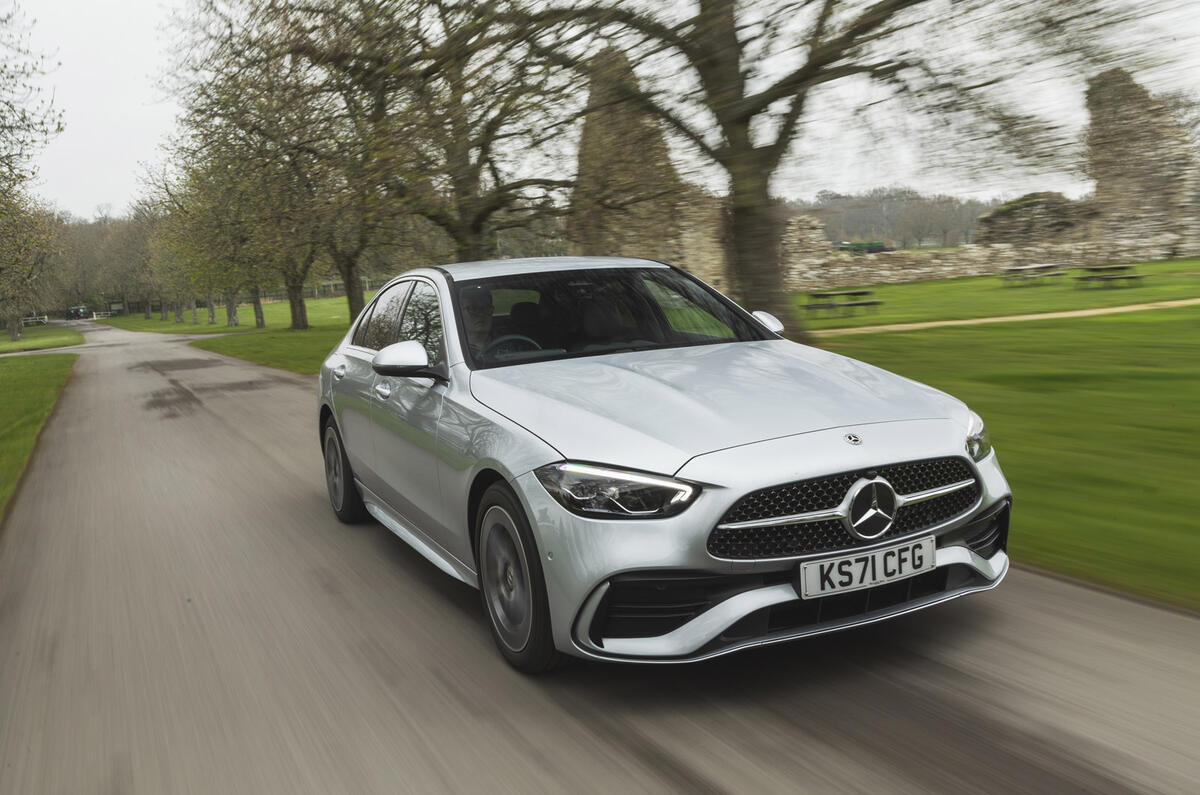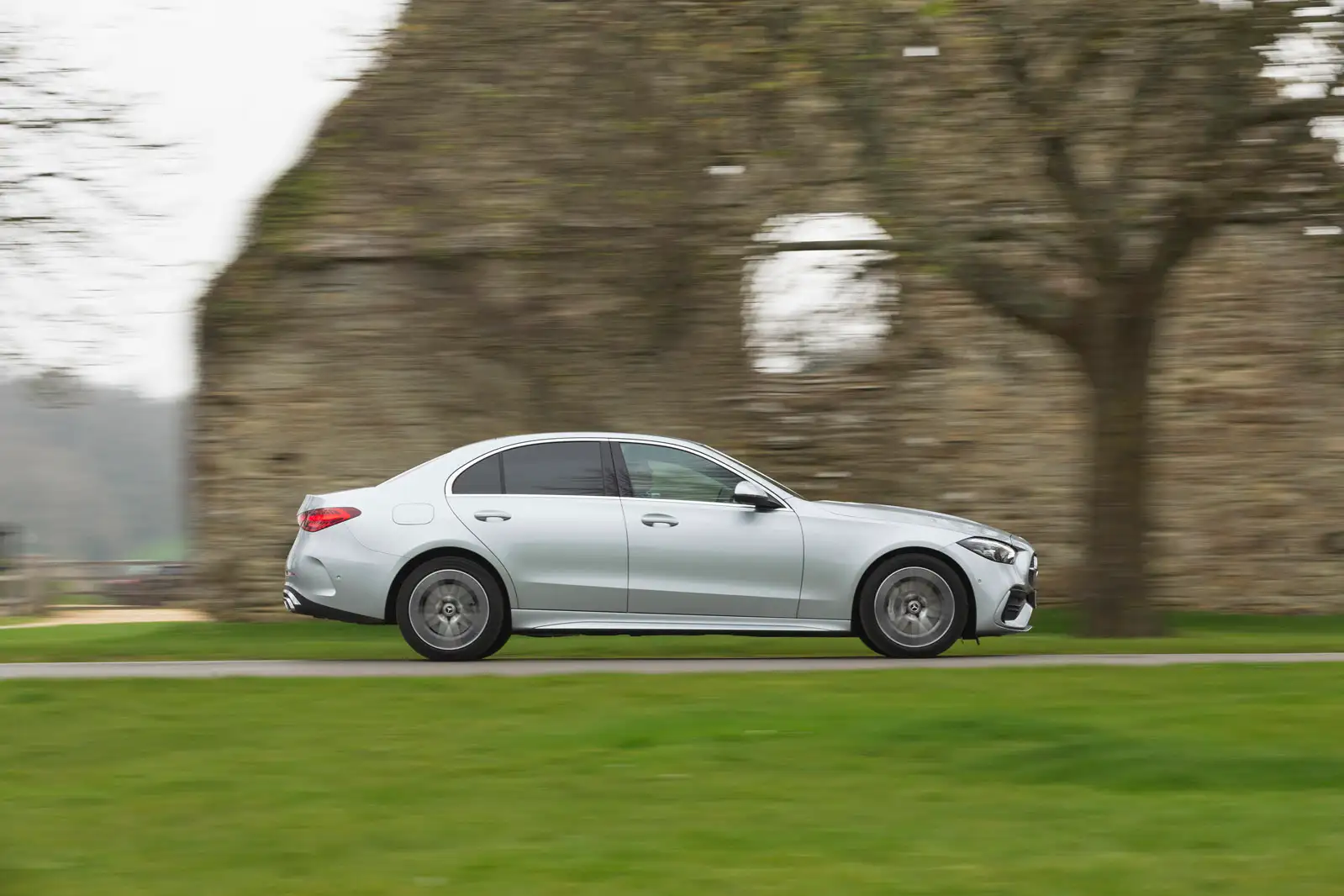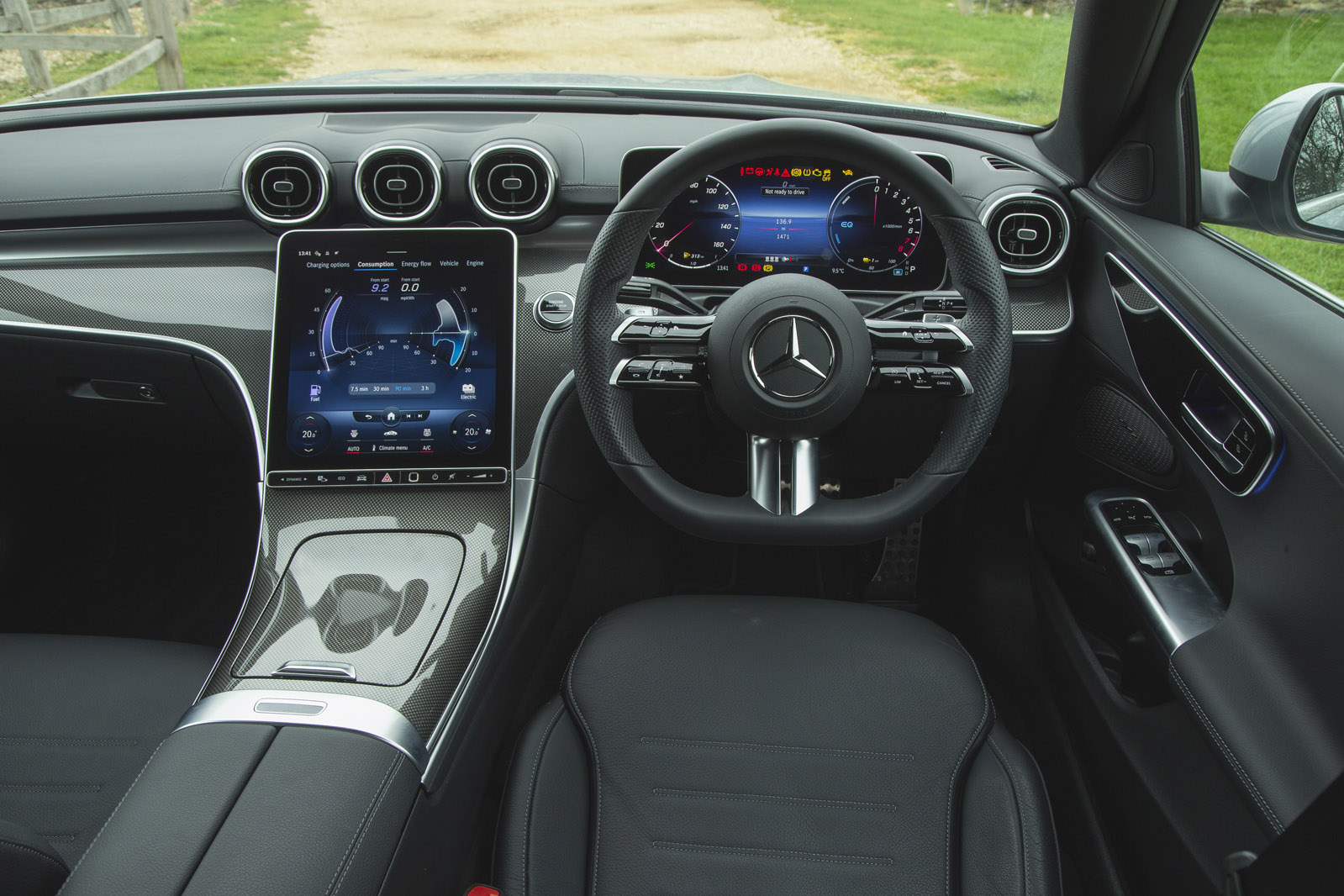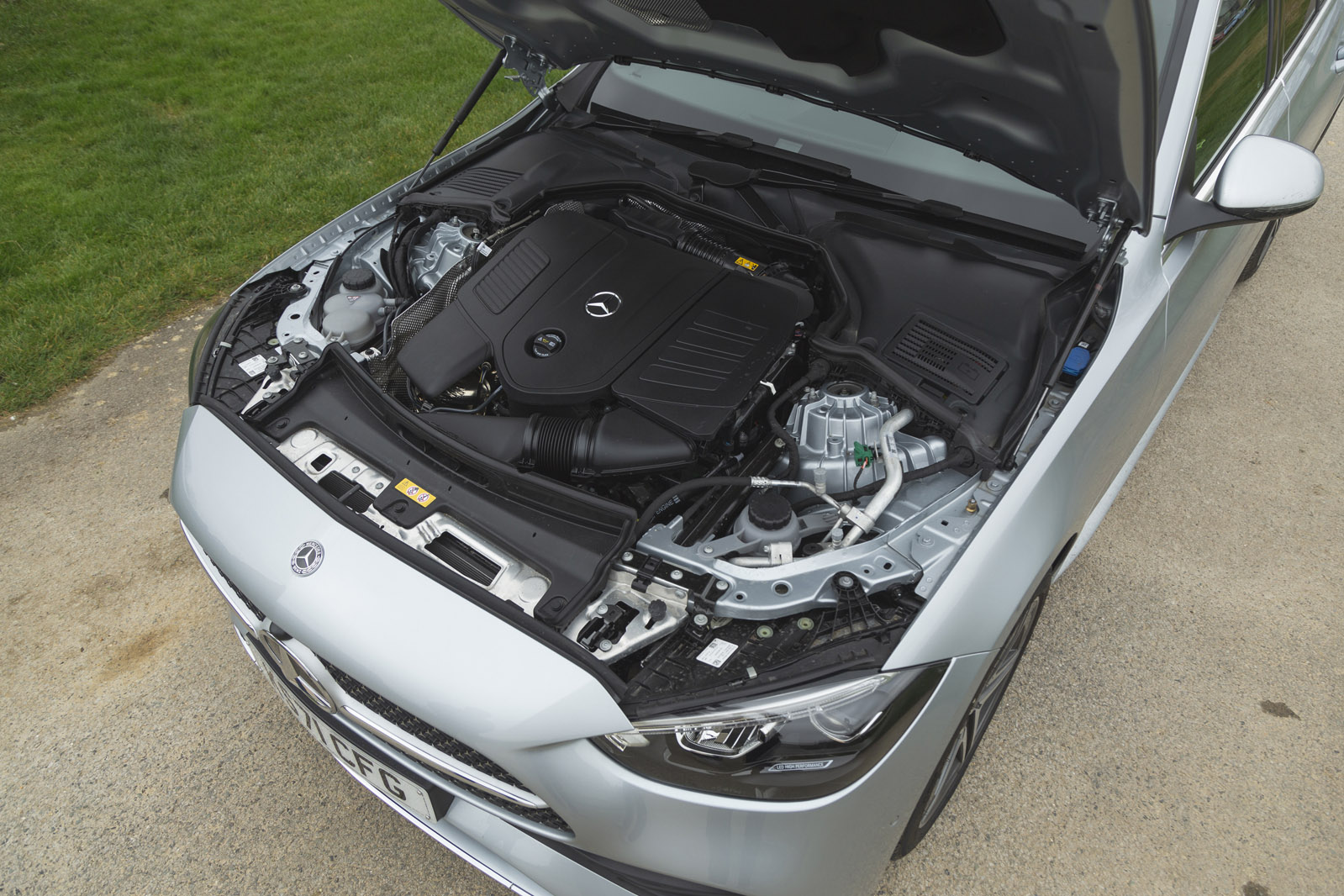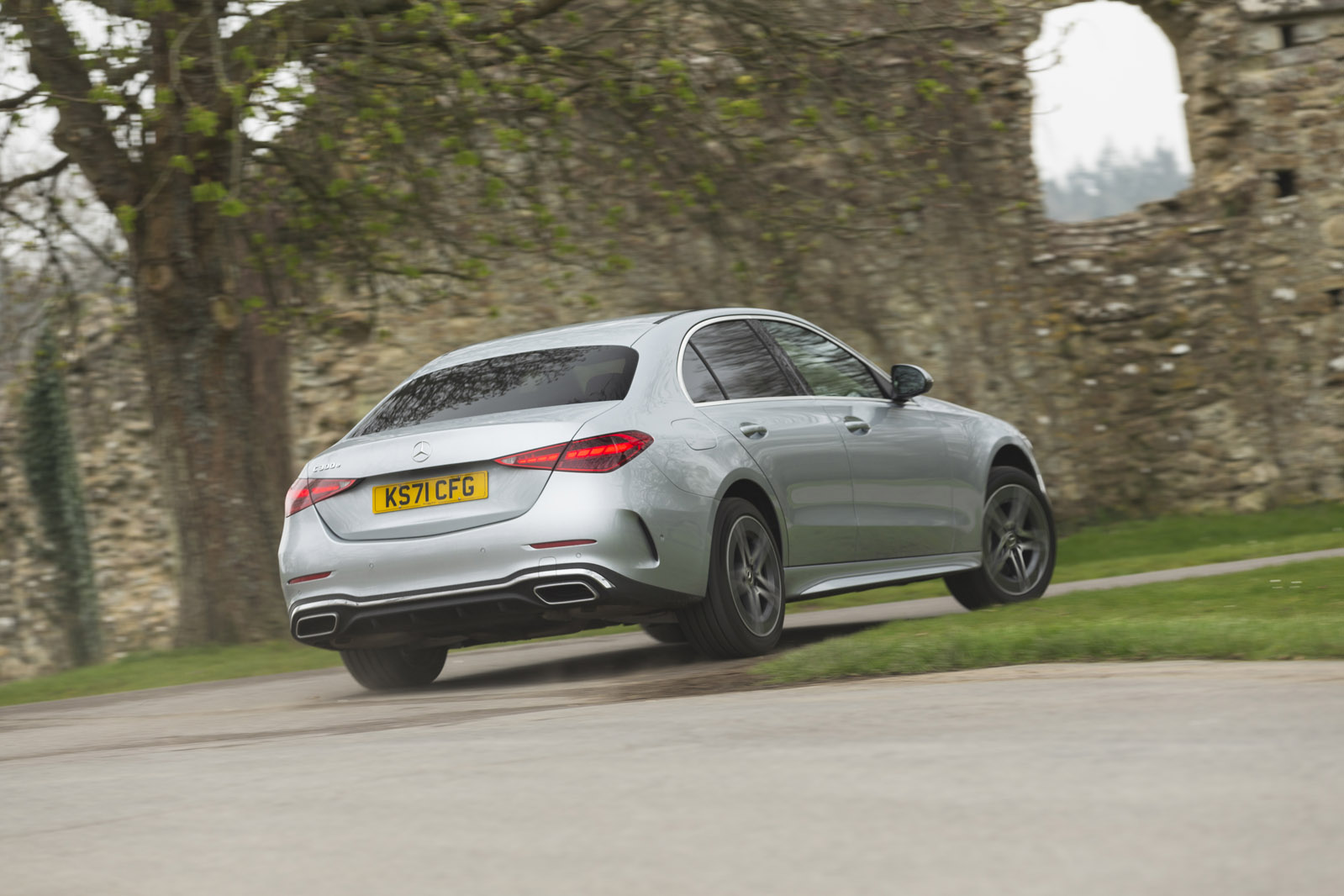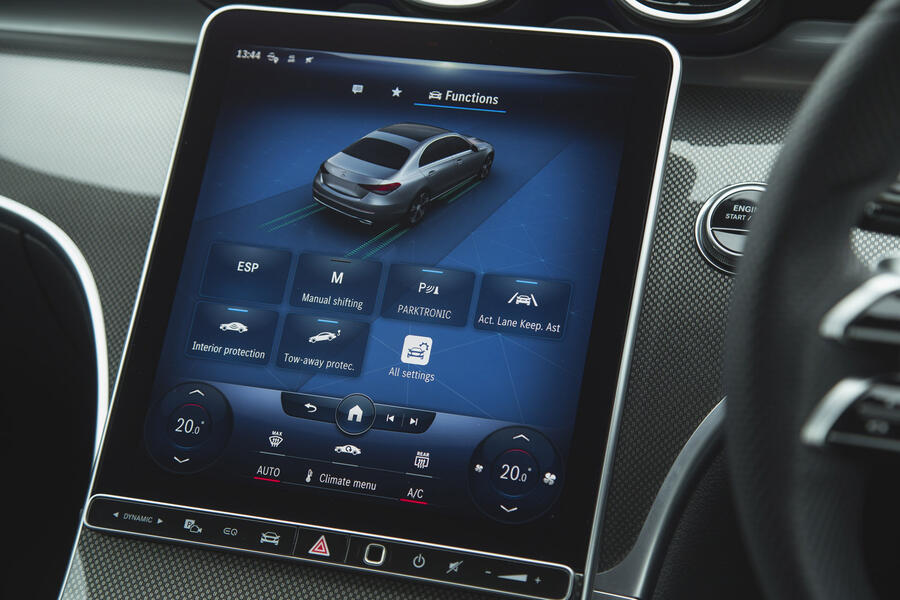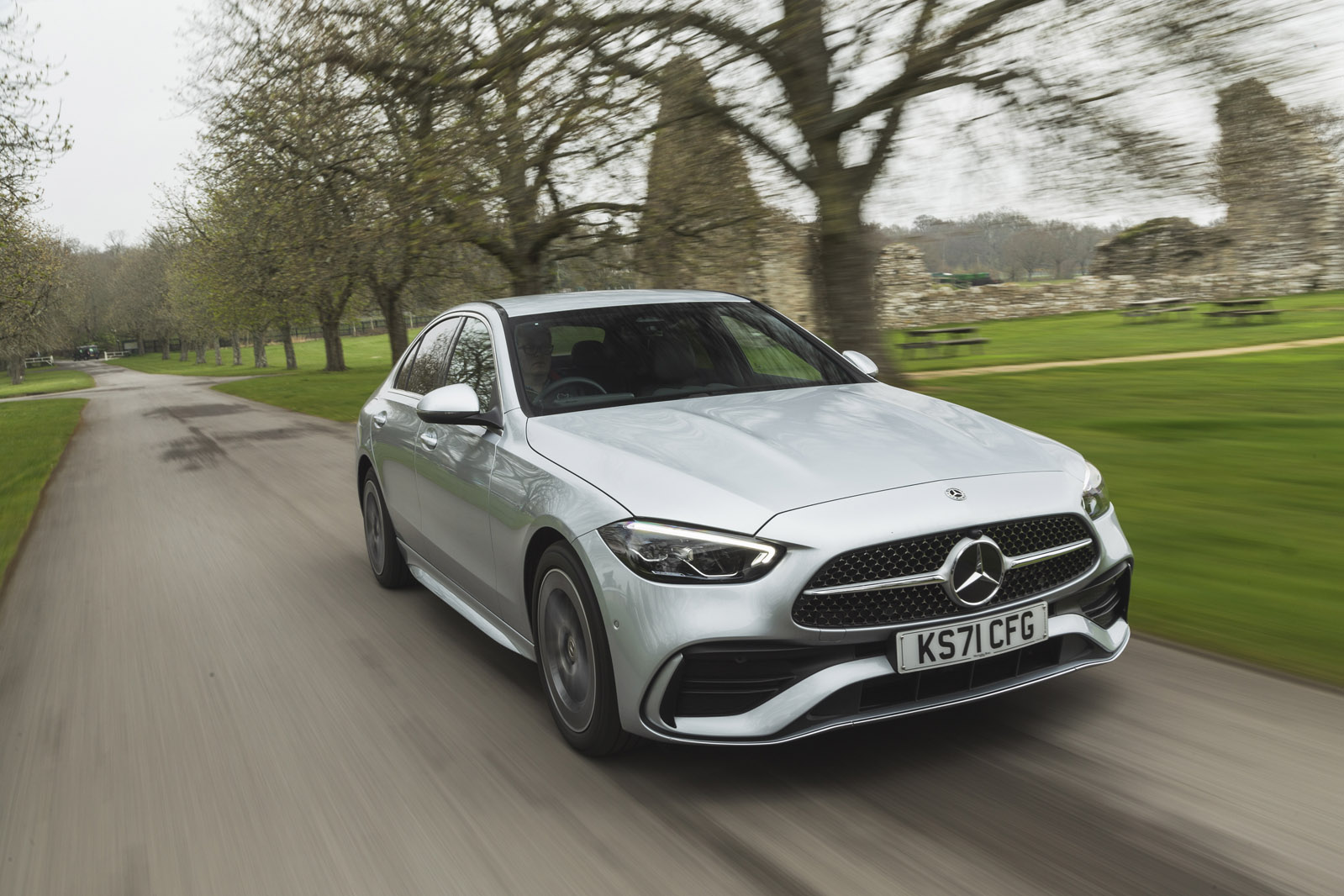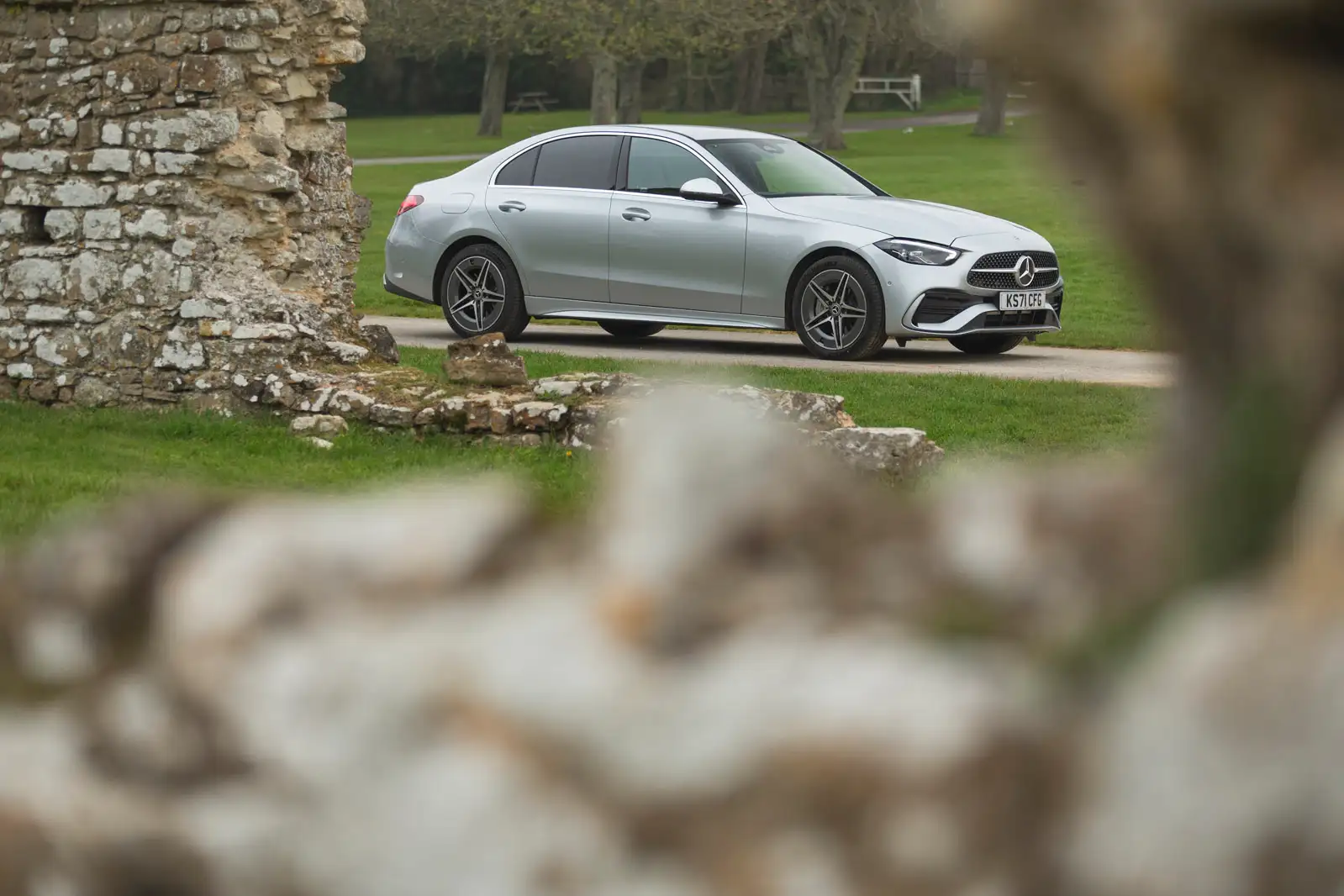It’s rare to find a press demonstrator from a premium car brand as modestly equipped as our C300e. This represented the petrol-electric Mercedes C-Class at its simplest and cheapest (as far as UK sales go, at least). The test car’s only fitted option was metallic paint.
And so to sit in it and still feel like you were in quite a lavishly designed and appointed environment, with all the equipment you would really need included as standard, came as a welcome initial affirmation of the car’s integrity as a modern luxury product.
The C-Class doesn’t stand up to close scrutiny of its on-board comfort and quality levels with quite as much distinction, though it certainly passes muster. You settle into a driver’s seat with plenty of room around it, in front of controls that are adjustable and well placed.
The sports seats aren’t especially comfortable or supportive, though (despite offering extendable cushions), while the margins of the driver’s footwell feel strangely restrictive around your toes, and are marked by disappointingly flimsy plastics.
Most of the cabin’s fittings have a higher-quality solidity of feel, but there are dull and plain mouldings and sharper edges elsewhere, too. Evidence of the odd cut cost, perhaps, that a Mercedes shouldn’t really betray.
The control layout is digitally replete. A 12.3in digital instrument screen immediately ahead of you is quite complex and busy with information at first but usefully versatile in the way it can be configured with practice. Dominating the centre console is a steeply raked 11.9in, portrait-oriented infotainment touchscreen whose bottom section permanently conveys the heating and ventilation controls.
The car’s rear passenger quarters are only averagely spacious for the segment: roomy enough for most adults and growing kids, and fairly comfortable, but not so for the tallest.
In the boot, you find a cargo space that’s usefully wide, and which can be extended for length via folding rear seatbacks – but which, owing to that battery placement, still isn’t very deep. A minimum loading height of just 310mm (at the through-loading threshold) might not admit some bulkier everyday loads (although there’s always the estate bodystyle if day-to-day carrying is expected).
Mercedes-Benz C-Class multimedia system
Mercedes’ 11.9in MBUX touchscreen infotainment system for the C-Class is a version of the multimedia set-up first seen on the new Mercedes S-Class. It’s packed with all the right features, although several testers remarked that it wasn’t as intuitive to use as they had expected, and didn’t like the way its raked screen angle made smudgy finger marks more obvious during daylight hours.
There is no separate haptic input device, and using the system while occasionally glancing away from the road is made harder by all the necessary menu swiping and scrolling. The alternative is to use the car’s steering-wheel thumb consoles to move a cursor around, which works fairly well, but it’s still too easy to brush these touch-sensitive pads inadvertently as you pass your hands around the wheel.
Mercedes’ natural speech recognition is supposed to make usability easier, and in some cases does so quite well, but there are certain quick-fire functions that deserve a top-level button or shortcut on the screen and don’t get one. Wireless smartphone mirroring and device charging are included for no extra cost.


